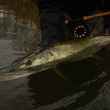I've stood on this ridge at least a dozen times. I've shot photos and footage every time. In every season. At any hour. Seeing all colors but black. Now I have black. Wish I didn't. Black is depressing personally and difficult professionally. My lens struggles with the stark contrast of smoky-white sky and tar-colored ground.
I’m documenting the result of a fiercely hot, wind-whipped wildfire that turned Idaho’s Tex Creek Wildlife Management Area into a black hole. Tex Creek covers 34,000 acres. Seventy-five percent of that burned in one week. It’s a severe burn, but not the only burn in the West this year.
I was covering the Yellowstone fires when Tex lit up closer to home. My son says it seems like the whole world is on fire. I’m thinking he’s right as I stare at the deep void and smell ashtray tinder. Even my feet sense the damage. The ash is piled so deep, it feels like I’m walking on the beach, but the beach is flakey cinders instead of grainy sand. So long wildlife management area. At least for now.
“Some animals have direct impact immediately. Snakes and small mammals cooked. They’re gone for now,” says Rob Cavallaro, Idaho Department of Fish & Game regional wildlife habitat manager. “What Tex Creek is known for, big game and grouse habitat, will come back, but there’s going to be change and we’re worried about that.”
Tex Creek is prime grassland for grouse. That’s gone. It’s also vital winter range for big game. That’s gone too. More than 4,000 mule deer and 3,500 elk winter specifically in the area that is now black. Thousands more winter across the whole WMA. Big game has priority here. That’s why Tex Creek closes to vehicle traffic in the winter. Hunter Lou Griffin snowshoes into the refuge to watch the migrators.
“When we have the snow, it’s unbelievable the amount of wildlife you see in here,” Griffin says. “Not many people want to walk it and the solitude is amazing. It’s just a very special place.”
Who knows what he’ll see on snowshoes this year. We're maybe two months from turning white. Big game on their way for winter range will face desolation rather than refuge. Or best case, a bit of short green up if they dig below the snow.
The state, along with Bureau of Land Management and Bureau of Reclamation, is formulating a rehabilitation plan that includes stabilizing slopes, preventing noxious weed sprout and re-establishing sagebrush. That’s a lot of action in a short mild-weather window.

“It’s very stressful,” Cavallaro says. “It’s a public trust issue. People love this place and they all have different ideas about what should happen.”
The only action I can find is silent ants scrambling about. Their crimson-colored bodies frantically gather specks of green juniper and pile the crumbs on a charred stump. It’s a small, but impressive effort. The insects are already in rebuild mode.
As for the fish that were here when the flaming devil went on its rampage, look to the creek at the bottom of the black canyon. It's a sorry sight. And will be even more sorry when weather washes the burn down steep hillsides.
“Erosion is a big concern, but there weren’t many fish in there before the fire so impact is minimal,” Cavallaro says.

I’ve never fished the creek. When it recovers, I better show it some respect by walking its banks and testing its waters. That’s what I promise to do as I finish my post-burn documentation and mentally mark my spot. I’ll be back on a regular basis to record recovery.
“In a year, we’ll see green aspen shoots and choke cherry starts, but not much in the way of sagebrush,” Cavallaro says.
Sagebrush won’t make a decent showing for about five years, but I’m already looking forward to standing on this ridge next year. Tex Creek, and every other parcel of Western land that burned this year, will look different. Not yet whole, but better than what I see now. That's the way of the wild. It will come back. The natural world is persistence in its purest form.

































Comments
tobin replied on Permalink
A all too familiar example of trying to shoehorn winter range and habitat into smaller and smaller areas since we as a society have unending desire to develop what remains. And the fires will only continue to burn fast and hot. Unfortunately Tex Creek likely sits at too low an elevation to have a high chance for rehab due to weeds, elevation and proximity to human habitation. But time will tell.
Ryan Sellers replied on Permalink
Excellent article, thank you so much for sharing. I will be in the Tex Creek area for the next few weeks for the sagebrush re-planting effort. Let me know if you need a field guy to share any updates! Thanks again - Ryan
Pages